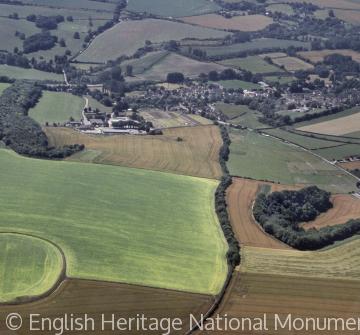Archaeological Sites, Monuments and Objects
 Codford Circle, a prehistoric ditch and bank enclosure to the north-east of Codford St Mary village
Codford Circle, a prehistoric ditch and bank enclosure to the north-east of Codford St Mary villageAn archaeological site is a location where evidence of past human activity is preserved. Remains may be visible above ground, such as buildings, earthworks and standing stones, or may be preserved beneath the modern ground surface, requiring archaeological techniques, including excavation and geophysical survey, to reveal them. Archaeological features may be termed monuments if they were constructed for ritual, ceremonial or commemorative purposes.
Archaeological sites and monuments in England include settlements (see Prehistoric and Roman Settlements), landscape features (such as field systems, parks and boundaries), industrial sites (including mines, quarries, mills and factories), military installations (for example, castles, forts and walls), funerary remains (including barrows, cemeteries and tombs) and religious structures (such as stone circles, temples, stone crosses and churches).
Archaeological objects (or artefacts) illustrate the diversity of past human endeavour. As stray finds, perhaps recovered from ploughsoil, they are studied for their intrinsic art, function and technology, but if recovered in situ they can often help to date associated archaeological remains. Some materials are better preserved in the archaeological record than others; for example more stone, precious metal and glass artefacts have been recovered than those made from wood, iron, textile or bone, which tend to decay more easily. Occasionally valuable artefacts were deposited in groups known as hoards. Examples of artefacts commonly recovered from English archaeological sites are coins, pottery, jewellery, tools and weaponry.









